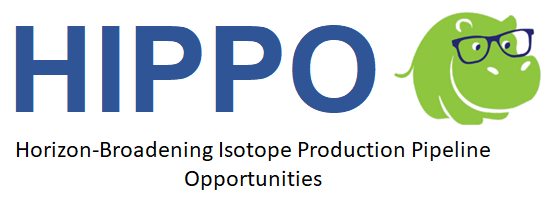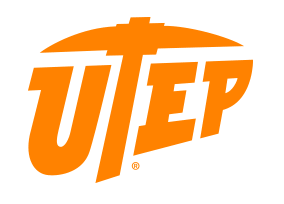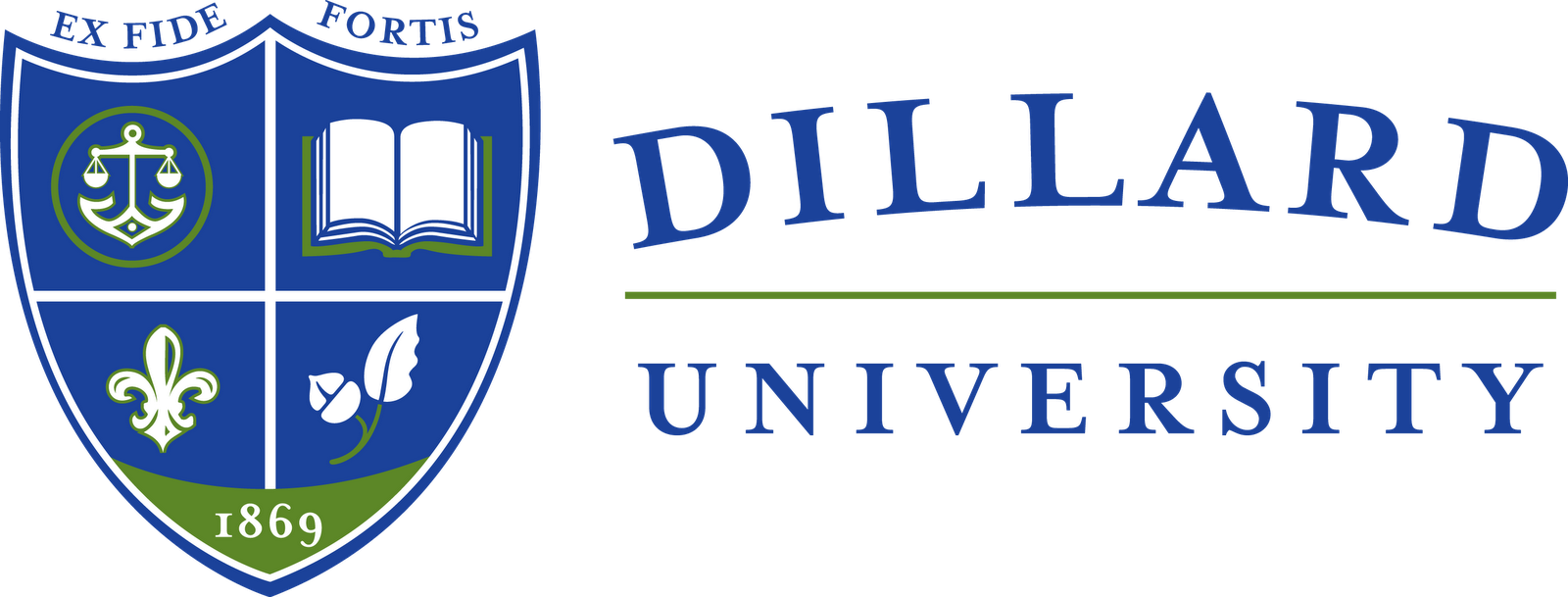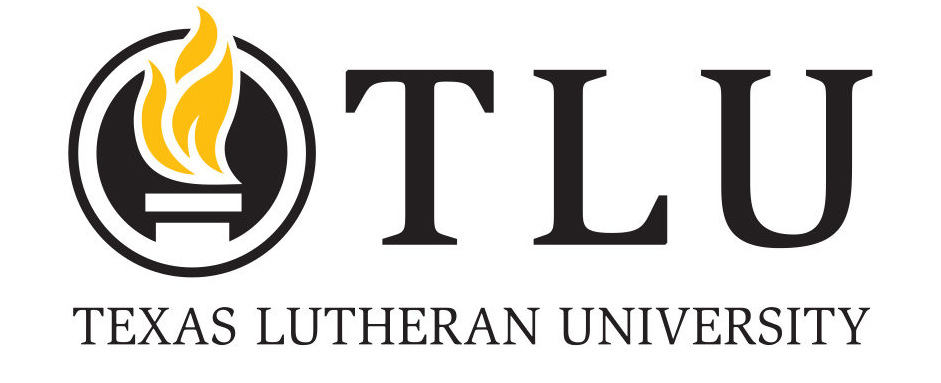Learn More About the Participating Institutions:
(Click within the rectangles for a short description of the institutions or click on the logo areas to visit their website.)
Traineeship Coordinator
Texas A&M University (TAMU) is relatively new to isotope production but has infrastructure and experience in both heavy-ion reactions of interest and a lengthy history of bringing learning opportunities to students. TAMU houses a K150 and a K500 cyclotron, as well as a research reactor. TAMU is currently developing astatine-211 production with a team that includes two graduate students and two undergraduate students. The vibrant REU program at TAMU has routinely hosted 10-12 undergraduate students for ten weeks each summer (2020 excepted) since 2004. TAMU is also the home of CENTAUR, an NNSA center that broadens opportunities for students in low energy nuclear physics. We have a collaboration with The University of Wisconsin (UW), The University of Alabama at Birmingham (UAB), and University of Notre Dame (UND) to study reactions with light ions that our K150 cyclotron can access, and other accelerators in HIPPO cannot. TAMU also has a pre-existing collaboration with LANL isotope program.
DOE Laboratory Production Sites
Argonne National Laboratory (ANL) is a multidisciplinary science and engineering research center where talented scientists and engineers work together to answer the biggest questions facing humanity, from how to obtain affordable clean energy to protecting ourselves and our environment. Ever since its birth out of the University of Chicago’s work on the Manhattan Project in the 1940s, its goal has been to make an impact — from the atomic to the human to the global scale. The Radioisotope Research and Production Program (R2P2) at ANL is a grouping of scientists, engineers, and technicians that draws on ANL’s core capabilities in radiochemistry, physics, computing, engineering, and accelerator science and technology to support the missions of the DOE IP. This program produces copper-67, a true “theranostic” radionuclide, for distribution through the DOE IP’s National Isotope Development Center (NIDC). ANL strives to advance accelerator-based development of radionuclides for medical applications through photonuclear (at the Low Energy Accelerator Facility, LEAF) and light-ion-driven (the Argonne Tandem Linear Accelerator System, ATLAS) radioisotope production methods and novel purification technologies.
Los Alamos National Laboratory (LANL) is home to an Isotope Program that is one of two medium energy proton accelerator production sites within the DOE IP and uses this powerful capability to produce isotopes in short supply. The Isotope Production Facility (IPF), a 100 MeV proton bombardment station located at the Los Alamos Neutron Science Center (LANSCE), is a premier facility able to conduct high current irradiations for large scale production, as well as delicate, low current experimental work. The IPF has a novel adjustable collimator to allow different target sizes within a single target station and operates at the highest routine production current in the world, using high current targetry expertise to push the boundaries of production. The Program also maintains a robust hot cell facility for isotope processing, as well as a glovebox line within the LANL plutonium facility for the separation of Am-241. The program routinely supplies a variety of production isotopes including Na-22, As-73, Al-26, Y-88, Si-32, and Cd-109, and is partnered with BNL and ORNL to bring accelerator-produced Ac-225 into routine production. A suite of research isotopes is also available, and the IPF is also used to collect fundamental nuclear data and perform experimental test irradiations to inform future production pathways. The LANL Isotope Program has a strong postdoc and student presence, with active participation in a wide variety of isotope production related research projects.
University Production Sites
The University of Alabama at Birmingham (UAB) has a TR24 variable energy (16-24 MeV) cyclotron with capabilities for the irradiation of solid, liquid and gas targets. UAB also has substantial dedicated radiochemistry space and equipment where students will become acquainted with nuclear science and radiochemistry techniques including target preparation, gamma ray spectroscopy, ion chromatography, trace metal analysis, and molar activity measurements. UAB is proud to be part of the DOE IP University Isotope Network (UIN) supported through the NIDC. The UAB cyclotron facility routinely ships isotopes including 64Cu, 89Zr, 52Mn for basic science studies, preclinical experiments and clinical trials across the US and Canada. UAB holds 14 active FDA-approved Investigation New Drug (IND) Applications for various radiopharmaceuticals prepared in-house for clinical trials. With nuclear science focused faculty members in both the medical school (Radiology) and college of arts and sciences (Chemistry), students have access to a diverse infrastructure and techniques related to isotope production. There are currently seven graduate students and six undergraduate students working on projects related to isotope production and radiochemistry. The UAB faculty listed in this proposal also have existing collaborations with many of the other institutions listed on this proposal including TAMU, ANL, LANL, UND, UW and SBU.
The University of Wisconsin (UW) Department of Medical Physics was the first accredited Medical Physics department in the world, born from a collaborative faculty venture of basic science (Physics) and clinical (Radiology) predecessors in 1958. It has been among the field’s leaders since. Currently, the Department is home to two biomedical cyclotrons, three junior faculty members, and two full-time staff scientists dedicated to various aspects of isotope production, radiochemical separations, and the synthesis and applications of radiopharmaceuticals. With their supervision and support, a total of seven graduate students pursuing their PhD in Medical Physics and three postdoctoral researchers lead research projects at the intersection of physics, chemistry, and biology. These projects have significant overlap with the DOE IP, with a total of five funding proposals completed, in progress, or pending support through the program in the past five years, including participation as a DOE IP UIN partner. Graduates of the department’s isotope production research groups have served leadership roles in academia, the national laboratories, and public service. Undergraduate researchers from UW obtain hands-on nuclear and radiochemistry experience. One student subsequently obtained a Nuclear Chemistry PhD degree from HIPPO collaborator TAMU. The UW principal investigators will leverage existing isotope production and radiochemistry-centric collaborations with ANL, UAB, UU, CUNY-HC, LANL, TAMU, UND, and SBU in their contributions to this proposal.
Other Core Universities
City University of New York (CUNY) is the largest urban public university in the US that serves about 275,000 degree-seeking students between its 25 campuses. The Radiochemistry Program at CUNY, based at Hunter College (HC) and Lehman College (LC) has three faculty currently involved in isotope production research and six radiochemistry faculty in total. Both campuses have radiochemistry laboratories: Hunter’s for both short and long-lived nuclides and Lehman’s being freshly renovated and planned for short-lived nuclides. Current efforts are focused on resin development for radiolanthanide separations, radiochemical separation methodologies for isotope harvesting, exploring new approaches for development of 44Ti/44Sc generators, and chelator synthesis and testing. These projects are in collaboration with various institutions including Brookhaven National Laboratory (BNL), Lawrence-Livermore National Laboratory, Michigan State University, and fellow HIPPO co-PIs at UU, UW, and UAB. Three current doctoral students have significant isotope production components in their dissertation research and five undergraduates have contributed directly to such projects (four were co-authors on publications). HIPPO will formalize a pathway for further collaboration and additional opportunities for students, both graduate and undergraduate, to visit more varied isotope production sites.
San José State University (SJSU) reflects the local community. With a broad radiation site-license, a wide variety of nuclear and radiochemistry spectroscopic instruments, and a dedicated radiation safety technician, SJSU has powerful tools to actively train undergraduate students in nuclear science research. It also houses the ACS:NUCL Nuclear Chemistry Summer School, funded by the DOE Office of Science, which is one of the longest ever running undergraduate summer schools for nuclear and radiochemistry. Prof. Esker recently joined SJSU to help revitalize its nuclear science research efforts. One of the goals of the Esker research group is to establish an active nuclear targetry development and characterization lab. The SJSU group’s expertise in target production and performing nuclear reactions at particle accelerators will help train undergraduates in the basic skills of nuclear science and ready them for productive paths towards isotope production careers. Connections forged through this program will open a new PUI to the IP pipeline.
Stony Brook University (SBU) is close to BNL, which has fostered collaborations and joint appointments in the radioisotope and radiopharmaceutical development space. Following the construction of a GMP radiotracer synthesis laboratory at Stony Brook School of Medicine (FERM) in 2015, which is equipped with hot cells and can routinely produce >200 mCi of F-18/C-11 radiotracers, Stony Brook Chemistry, Radiology and Cancer Center departments have hired four radiochemist faculty in addition to two already tenured faculty active in this research space. Faculty work closely with isotope producing facilities at BNL, NCM Bronx, UAB and UW to develop new approaches to radiopharmaceutical synthesis and production. The following radioisotopes are approved for usage on radiation permits: C-14, F-18, Sc-44, Ti-44, Sc-47, Cu-64, Cu-67, Ga-66, Ga-67, Ga-68, Zr-89, Y-86, Y-90, Tc-99m, In-111, La-135, Lu-177, I-125, I-124.
The University of Utah (UU) has a Nuclear Engineering Program that houses a 100 kW TRIGA reactor with radiochemistry facilities that include various analytical instruments including three HPGe detectors, NaI detectors, alpha detectors, and liquid scintillation counting. Furthermore, the Mastren lab houses radioHPLC, radioTLC, gamma counter, and cell culture capabilities. Students will have access to these facilities during their time at UU and become familiar with various methods in nuclear science that are applicable to isotope production. The nuclear engineering program is comprised of four faculty members actively pursuing research for various nuclear applications. As a small department, students have open and direct communication with all faculty members, which serves to enhance their nuclear education. Currently, there are four graduate students and two undergraduate students at the UU working on various projects that are applicable to isotope production. Furthermore, the Mastren Lab is funded by the DOE IP for research on the production of Tb-161 and radionuclide generator production for alpha emitting radionuclides. Currently, the UU has active collaborations with core institutions UW, CUNY, and LANL.
The University of Texas at El Paso (UTEP) is in El Paso, TX, with 140 physics majors. Several of these UTEP students have participated in the TAMU REU program over the years. Prof. Jorge Muñoz is an Assistant Professor of Physics with expertise in Machine Learning. UTEP also offers a program of courses and research leading to a master’s degree in Physics. The research done through HIPPO could satisfy the research project and thesis requirement of the master’s degree.
Affiliated Institutions
Dillard University (DU) is a private University (HBCU) in New Orleans, LA. DU has programs in chemistry, physics, and medical physics and collaborates with MSU in nuclear and particle physics.
Texas Lutheran University (TLU) is geographically located in Seguin, a semi-rural south-central Texas town with a population of just over 29,000, and is a nationally recognized, private liberal arts university with a student population of approximately 1400 students. TLU Physics has about 40-50 declared majors all of whom are required to successfully complete a year-long meaningful research project that culminates in a senior thesis which is presented to the faculty and students to graduate. This dynamic physics program graduates 5-6 students per year, which is about five times the average for a school of its size. They are also above average in the percentage of physics degrees that go to women and under-represented minority (URM) students.















